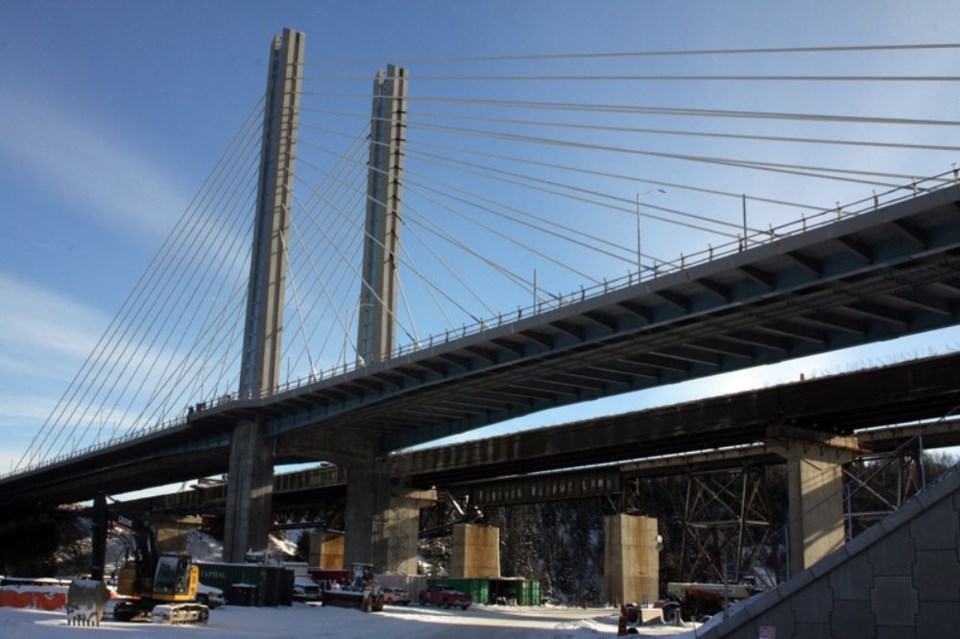The Ministry of Transportation is hoping to reopen the Nipigon River Bridge to two lanes by the end of February.
That update was provided Tuesday morning by Transportation Minister Steven Del Duca and Northern Development and Mines Minister Michael Gravelle during a conference call with media outlets from across the province.
“Of course, recognizing this is a crucial link not only for communities in the direct area but also from an economic standpoint in terms of it being the TransCanada, the ministry is working as hard as we can and as fast as we can to safely reopen both lanes of traffic,” Del Duca said.
Traffic has been reduced to one lane after the bolts holding a girder to the expansion joint failed, causing a section of the bridge to split and heave upwards on Jan. 10. The bridge was completely closed for 17 hours.
There is no alternate route connecting the country other than the span, with the bridge closure effectively cutting the country in half.
Flagging crews have been in place to direct traffic and a pace car has been leading each convoy across the bridge, with a speed limit of 25 kilometres per hour in place.
As part of the efforts to reopen the second lane, there might be intermittent closures during the next six weeks.
“I think it’s important to recognize we’re not talking about closures of excessive duration. We’re talking about, at most, one hour or two hours during what we define as off-peak hours in order to get that outcome we’re all looking for,” Del Duca said. “We don’t anticipate partial or full lane closures will be lasting for hours and hours.”
The bolts in question are in the process of being tested by Western University and the National Research Council of Canada, with a visual examination to be completed this week. After that, the two labs are expected to know how long more comprehensive testing, which includes chemical testing, will take.
The cause of the failure of the bridge, which is the only cable-stayed bridge in Ontario, has generated much speculation across the province.
Assistant deputy minister Gerry Chaput said while the investigation is not ready to rule out any potential causes, there is no indication the cables are at fault.
“The ministry has reviewed the design of the cables, confirmed the tensions that were in place at the time of construction were appropriate, that the design of the cables and tensions within them were not too tight,” he said.
“However, we continue to look at numerous factors in terms of what caused the failure. We wanted to make sure people understood the cables that were in place are appropriate for the loads of that structure and for the design in accordance with the Canadian Highway Bridge Design Code.”
Demolition work on the old bridge remains on hold as the government continues to explore solutions on reopening the bridge.
Sign in or register
- Messages
- Post a Listing
- Your Listings
- Your Profile
- Your Subscriptions
- Your Likes
- Your Business
- Support Local News
- Payment History
Registered Users
Already have an account?
New Users
Create a free account.
